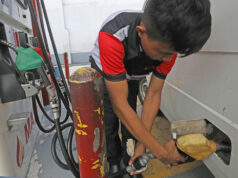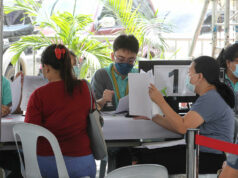DIGITAL technology as well as collaboration between regulators and the private sector will further expand financial inclusion in Asia and the Pacific, including the Philippines, experts said at a forum yesterday.
At the third annual Asia Finance Forum in Pasig City on Wednesday, ADB Vice-President for Knowledge Management and Sustainable Development Bambang Susantono said that to expand financial access, applications for new technology should constantly be pilot-tested in so-called regulatory sandboxes — closed environments where any unforeseen issues can be worked out.
Mr. Susantono said other technologies have the potential to expand financial inclusion like distributed ledger systems such as a blockchain as well as digital IDs with biometrics.
“Yet, we must also be aware of the potential risks these new technologies bring… For example, risks from financial sources may include maturity mismatches, liquidity mismatches and excess leverage. Operational risks may encompass cybersecurity, legal and regulatory challenges and anti-money laundering,” he added.
Bangko Sentral ng Pilipinas (BSP) Managing Director of the Center for Learning and Inclusion Advocacy Pia Bernadette Roman Tayag said that the central bank has been “actively pursuing” financial innovation and inclusion via collaboration with the private sector.
“Beyond our policies and regulation (and) partnerships on financial education and consumer education, you will recognize the important role that other private players play in terms of reaching out and delivering these types of messages so we leverage that,” Ms. Tayag added.
ADB Senior Digital Technology Specialist Lisette Cipriano said that the bank’s project aiming to provide a low-cost, high-speed and accessible broadband Internet across Asia and the Pacific.
In July, the ADB released its draft proposal on the Asia-Pacific Remote Broadband Internet Satellite Project which “will entail construction, launch, and operation of a shared, geostationary earth orbit, high-throughput satellite (Kacific-1), featuring Ka-band technology.”
Ms. Cipriano said the satellite broadband project is currently in the proposal stage.
“I believe you will hear some announcements maybe within this month… We’re looking at low-cost satellite solutions for Asia and the Pacific to see how we can provide connectivity in remote areas,” Ms. Cipriano told reporters on the sidelines of the event.
The project targets nationwide coverage for the Philippines, Bangladesh, Fiji, Indonesia, Kiribati, Myanmar, Nepal, Niue, Papua New Guinea, the Solomon Islands, Timor-Leste, Tonga, Tuvalu and Vanuatu.
She considers the project as a “potential solution” to address the issue of financial inclusion due to lack of infrastructure and connectivity and maintained that the ADB will have to ensure that it has to be sustainable and scalable.
According to the proposal, the project will be ADB’s first satellite financing project and the Kacific will require the services of up to three teleport operators, to be located in Subic, Philippines, in Australia and in Indonesia.
“The teleport connections ensure the connection of the Kacific satellite signals to the backbone internet,” according to the proposal. — Beatrice M. Laforga



